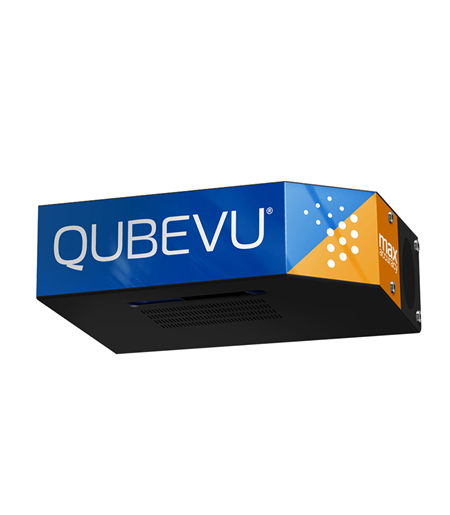Is the website displaying in the correct language? Please confirm or select a different language.
Your region has been set automatically. Please confirm or select a different region.
Recovering Lost Space, Time and Money with Dimensioning
Surprise! FedEx, UPS and USPS have again announced rate increases, with dimensional weight as the new standard of measure. Relying on weight-based shipping estimates is increasingly risky as rates climb. Getting rates wrong means getting stung with chargebacks, and losing big bites from slim margins.
Augmenting your scales with dimensioning equipment puts you back in control. Leading distributors, ecom fulfillment centers, and shippers of every stripe are doing just that, so they can again predict and quote shipping charges with accuracy, and compare shipping rates in real time.
Dimensioning your inbound stream saves big money as well. Facilities that have embraced dimensioning have maximized warehouse capacity, increased operational efficiency, and reduced material costs. The bottom line: If you receive, store, pick, pack, or ship, dimensioning is an easy way to save money. Here’s how:
Space is money
According to the results of the most recent Warehousing Education and Research Council (WERC) survey, warehouses and DCs across the country are bursting at the seams. Whether it’s driven by increased volumes or an increased number of SKUs, the number one issue facing warehouse and DC managers today is Average Warehouse Capacity.
Construction of new warehouse space continues but it cannot keep up with demand, a trend that is likely to persist with the explosion of ecommerce. According to commercial real estate firm, CBRE, the average availability for warehouse and distribution centers in the U.S. has fallen in the last 28 out of 29 quarters, and is now at its lowest rate since 2001. CBRE reports that with tight supply rent for warehouse space has increased an average of 6.6% compared to just one year ago, up 25% during the prior three years.
Time is money
The impact of giant e-tailers like Amazon has spread beyond ecommerce circles. Both internal and external customers have high expectations for fast, cheap, and accurate delivery. One option – increasing labor and adding equipment – is expensive and time consuming. A quicker, more cost-effective solution is to optimize operations.
At Amazon, operational efficiencies like direct-to-box picking and pre-manifesting save precious order processing time. Pre-printing packing lists and shipping labels eliminates double handling for more efficient throughput. When pickers place items directly in the shipping box, they eliminate two steps per order. But you don’t have to be a giant like Amazon to put these measures in place.
Dimensioning is the Key
With accurate dimensional data for every SKU in the system, you can generate shipping labels when the order is placed. Your pick lists can specify the right-sized box for every order, so pickers don’t have to guess which box to use. Besides saving time with direct-to-box picking, you’ll save money on corrugated and void fill, and you won’t have to pay to ship boxes that are too big for the order. Dimensioning is an absolute necessity if you’re considering made-to-measure packaging system.
Moving faster can lead to more mistakes and make pick errors are costly: lower customer satisfaction, reverse shipping charges, and labor costs to disposition returns. Reverse logistics costs are estimated at about 8% of total sales, a big hit to your bottom line. By choosing a dimensioning system that images every item it scans, you can include pictures of each item on the pick list. Pickers can verify their selections and dramatically reduce pick errors. One warehouse using images on its pick lists reported an 85% reduction in the error rate.
Money is money
On top of making operations more efficient and maximizing storage capacity, dimensioning reaps rewards in your billing department too. When both you and your shipper use dim weights to calculate shipping charges, you’re comparing apples to apples and invoicing mistakes are easy to discover. Using a system certified for accuracy is essential; your manual measurements – or those of an uncertified system – won’t hold water when you contact your carrier for a refund.
Avoiding chargebacks is another savings opportunity. Both FedEx and UPS now charge “special handling fees” to companies that supply inaccurate package dimensions. In the past, warehouses and DCs with poly-bagged or irregularly shaped items made tough choices – either incur high chargebacks or measure every irregularly shaped item by hand. With a dimensioning system that can measure any shape, they keep the outbound stream running and avoid surcharges.
When a cube isn't a cube
Even outbound parcel streams consisting solely of cardboard boxes are vulnerable to chargebacks, especially if they use weight-based shipping estimates rather than dimensional weights. In addition, boxes that bulge slightly around the middle will also incur surcharges. So if your 10”x10”x10” cube is slightly overfilled and now measures 10”x11”x10” – a volumetric deviation of 10% – you’ll be charged “special handling fees.”
The future is now
There are few among us who type letters on typewriters instead of writing an email. Or who refuse to use a cell phone because land lines came first. When technology moves forward, smart business people move with it.
More and more logistics firms, shipping companies, warehouses and DCs are embracing the latest dimensioning technology. According to a recent VDC Research survey, 43% of global respondents involved in the warehousing and distribution space reported that they currently use parcel/ carton dimensioning with 30% planning to support dimensioning of items in the future.
Even small operations can enjoy the benefits of dimensioning with a small-footprint system that doesn’t require any buildout. For companies that want to get their feet wet, QubeVu offers a state-of-the-art system that is available by lease for less than $200/month.



 My Account
My Account


